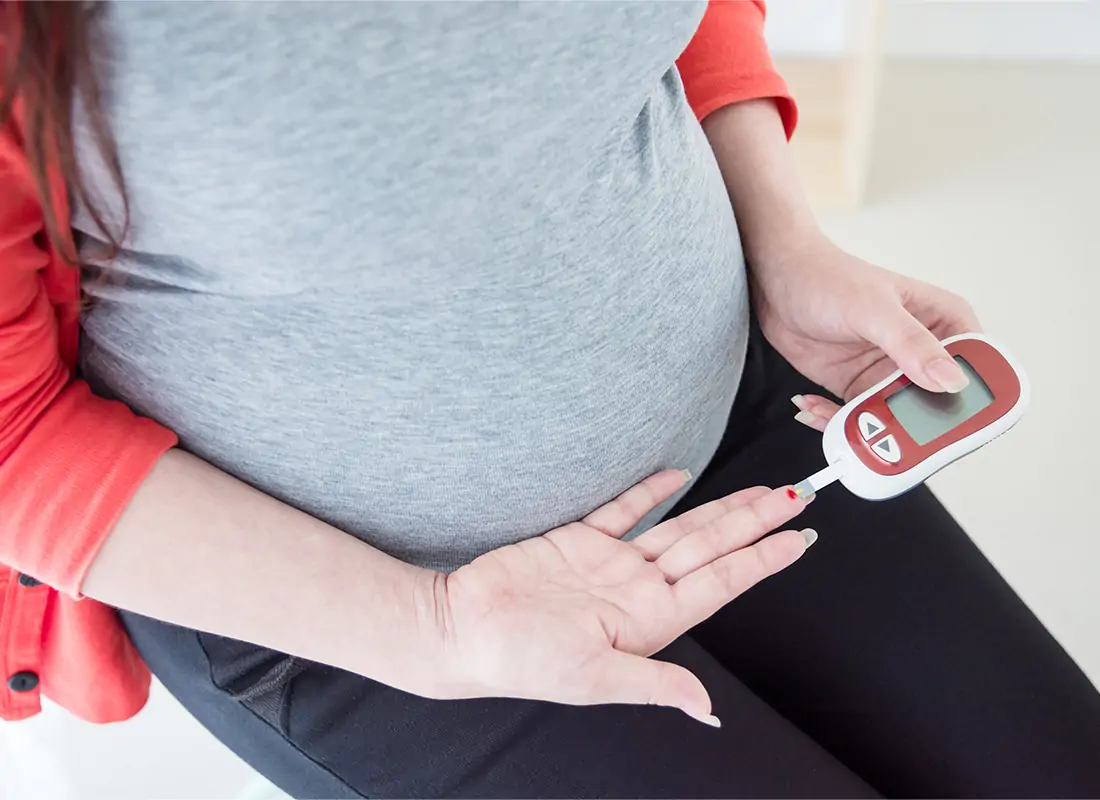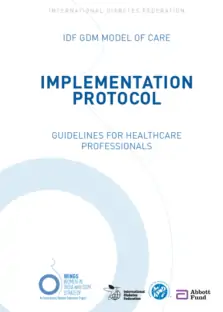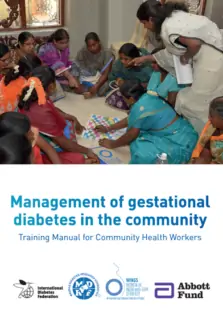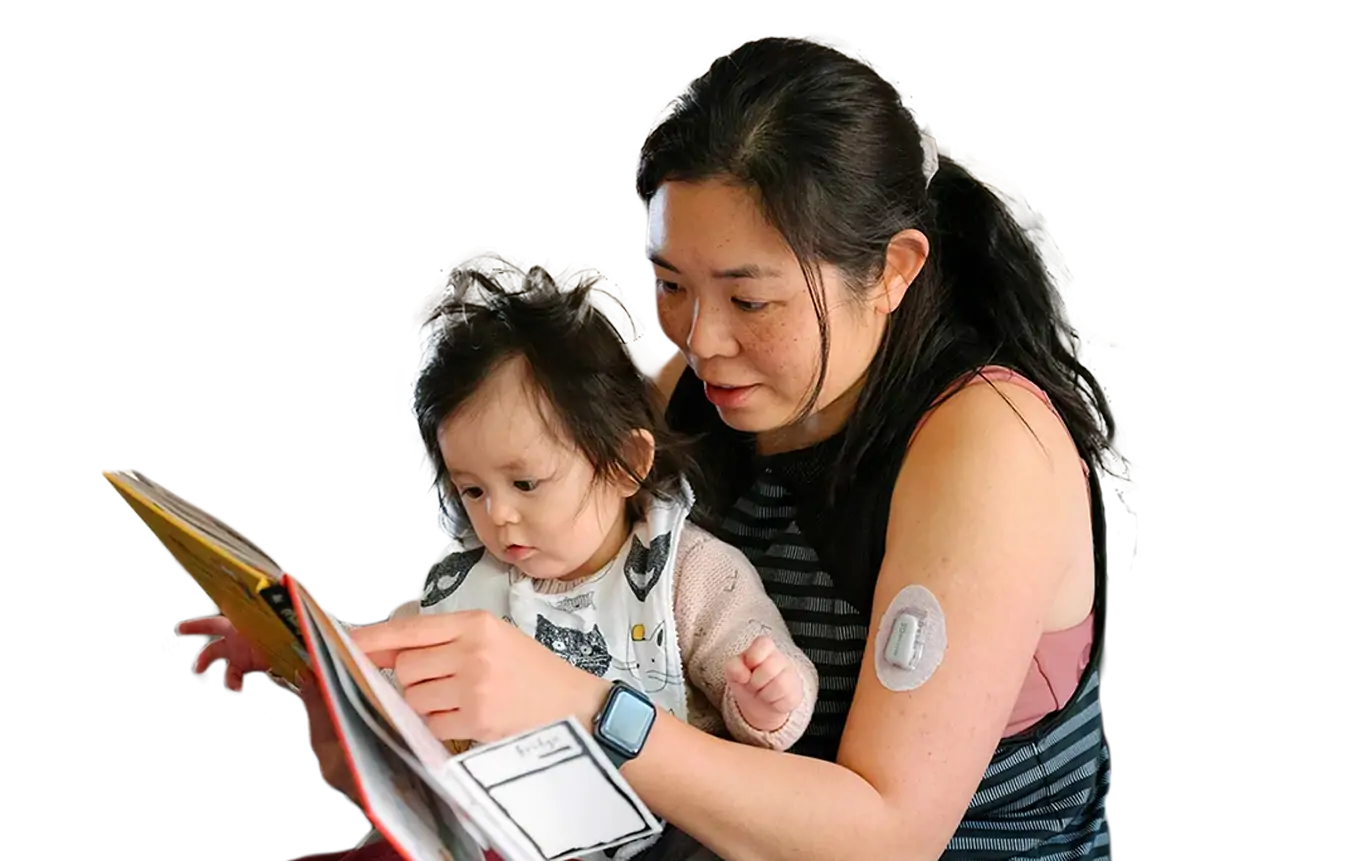Gestational diabetes (GDM) is caused by high blood glucose that develops during pregnancy and usually disappears after birth. Diabetes during pregnancy can affect the health of the mother and the baby, with possible long-term consequences. It can lead to pregnancy-related complications, including high blood pressure, large birth weight babies and obstructed labour. However, lifestyle changes and medication can help manage the condition.
During pregnancy, the placenta produces hormones that can interfere with the body’s ability to use insulin effectively. This is known as insulin resistance, a normal part of pregnancy. However, in some women, insulin resistance becomes too high, leading to gestational diabetes.
In 2021, about 21.1 million live births or 16.7%, had some form of high blood glucose (hyperglycaemia) during pregnancy. The condition is more common in low- and middle-income countries with limited access to maternal care.
Women over 45 are at greater risk of hyperglycaemia during pregnancy, while women with a history of GDM have an increased risk of developing type 2 diabetes within five to ten years after delivery.
Children exposed to high blood glucose levels during pregnancy may also be at higher risk of becoming overweight or obese and developing type 2 diabetes.

Causes and risk factors of GDM
The exact cause of gestational diabetes is not yet known. Still, several risk factors can increase the chances of developing GDM. These include:
- Living with overweight or obesity
- Being over the age of 45
- Having a family history of diabetes or gestational diabetes in a previous pregnancy
- Having polycystic ovary syndrome (PCOS)

Commons symptoms of GDM
Gestational diabetes often has no symptoms. However, some women may experience symptoms such as:
- Increased thirst and urination
- Fatigue
- Blurred vision
- Nausea
- Frequent infections, such as yeast infections
Managing GDM
Gestational diabetes can be managed with a combination of lifestyle changes and medication. In most cases, women with gestational diabetes can manage their blood sugar levels by making dietary changes and exercising regularly. However, some women may need insulin or other medications to control their blood sugar levels during pregnancy. For most women with GDM, glucose levels return to normal after delivery and treatment is no longer necessary.
Nutrition plays a crucial role in managing gestational diabetes. Generally, women with gestational diabetes should eat a diet rich in vegetables, whole grains, lean proteins and healthy fats. In addition, smaller, more frequent meals throughout the day can help regulate blood sugar levels.
While there is no universal medical consensus on the nutritional components of a diet for women with GDM, healthy nutritional recommendations should consider carbohydrate portion size to limit glucose spikes. Carbohydrates include whole grains, such as bread, cereal, pasta and rice, and starchy vegetables, such as corn and peas. Always consult your healthcare provider to work on a suitable meal plan adjusted to your specific health requirements.
In addition to carbohydrates, nutritional meals should include plenty of whole fruits and vegetables and moderate amounts of lean proteins and healthy fats. It is best to avoid sugary foods and beverages, such as sodas, fruit juices and pastries.
Regular physical activity is another factor that can contribute to better glycaemic control. Any movement or exercise can help regulate glucose levels in women with GDM. It can also prevent excessive weight gain and reduce the risk of complications during pregnancy.
Healthcare professionals generally recommend moderate-intensity exercise for at least 30 minutes a day, most days. The best exercise options for pregnant women with GDM are low-intensity exercises such as walking, swimming, stationary cycling and prenatal yoga. Always consult your healthcare provider before starting any type of physical activity when pregnant.
The importance of early detection
Early detection of gestational diabetes is crucial for prompt treatment, which can help prevent complications for both mother and baby. Women at high risk of gestational diabetes should be screened during their first prenatal visit. Further recommendations advise screening all pregnant women for gestational diabetes between 24 and 28 weeks.
IDF gestational diabetes resources

IDF GDM Model of Care Implementation Protocol

Management of gestational diabetes in the community




